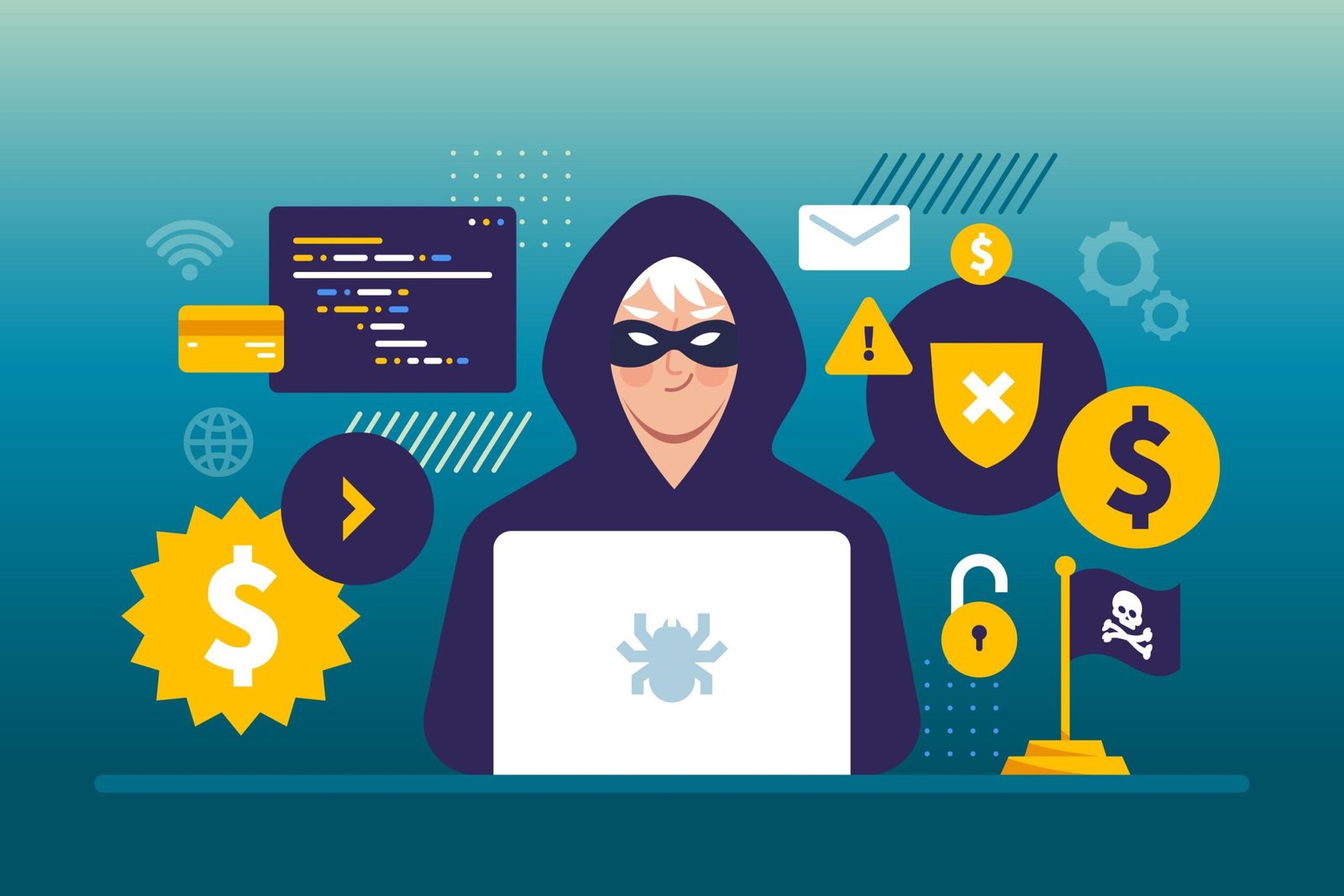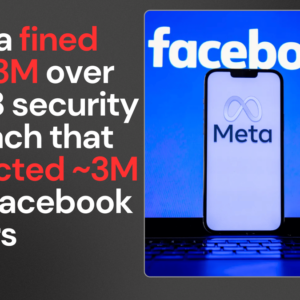In today’s digital age, the security of our devices is more important than ever. With countless threats lurking online, understanding how antivirus software works is crucial for protecting our personal information and ensuring smooth computer operation. So, what happens when your computer encounters a hidden threat? Let’s uncover how antivirus software keeps your data safe!
What Is a Virus?
Before diving into how antivirus software works, it’s essential to understand what a virus is. A computer virus is a type of malicious software, or malware, designed to replicate itself and spread from one computer to another. It can disrupt the normal functioning of a device, corrupt files, and even steal sensitive information. The term “virus” stands for Vital Information Resources Under Siege, highlighting its potential to compromise critical data.
Types of Malware
To fully grasp the scope of threats that antivirus software defends against, it’s helpful to know about various types of malware:
- Worms: Unlike viruses, worms can spread independently without needing to attach themselves to a host file. They often exploit vulnerabilities in network protocols.
- Trojans: These are deceptive programs that appear harmless but carry malicious payloads. Users often download them unknowingly.
- Ransomware: This type of malware encrypts files on the victim’s device and demands payment for decryption keys.
- Spyware: Spyware secretly monitors user activity and collects personal information without consent.
Understanding these different types of malware helps us appreciate the complexity of antivirus software’s role in cybersecurity.
How Antivirus Software Identifies a Virus
Antivirus software employs several techniques to detect viruses and other malware. Here are the primary methods used:

Signature-Based Detection
- Definition: This method relies on a database of known malware signatures and unique strings of data that identify specific viruses.
- How It Works: When you run a scan, the antivirus compares files on your computer against this database. If it finds a match, it flags the file as malicious.
- Limitations: Signature-based detection is effective for known threats but struggles with new or modified malware that doesn’t have an existing signature in the database. This is why regular updates are crucial.
Heuristic Analysis
- Definition: Heuristic analysis goes beyond known signatures by examining the behavior of files.
- How It Works: The software looks for suspicious characteristics or actions typical of malware, such as attempts to modify system files or access sensitive data. This method can detect new or disguised viruses that haven’t been cataloged yet.
- Example: If a program tries to access multiple files rapidly or attempts to disable security features, heuristic analysis may flag it as suspicious.
Behavior Monitoring
- Definition: This technique observes the behavior of programs in real-time.
- How It Works: If a program behaves suspiciously—like trying to delete files or send data without permission the antivirus can take immediate action, such as blocking the program or alerting the user.
- Advantages: Behavior monitoring allows for proactive detection and can stop attacks before they cause significant damage.
Cloud-Based Detection
- Definition: Many modern antivirus solutions use cloud technology to enhance detection capabilities.
- How It Works: When a new file is encountered, it may be sent to cloud servers for analysis against vast databases of malware signatures and behaviors. This allows for quicker updates and detection of emerging threats.
- Benefits: Cloud-based detection reduces the load on local systems and ensures that users have access to the latest threat intelligence without needing constant local updates.
Sandbox Analysis
- Definition: Sandboxing involves running suspicious files in an isolated environment.
- How It Works: The antivirus executes the file in a virtual space where it can observe its behavior without risking the actual system. If the file exhibits malicious behavior, it can be flagged or removed before causing harm.
- Use Cases: This method is particularly useful for analyzing unknown files downloaded from the internet or received via email attachments.
The Process of Virus Removal
Once a virus is detected, antivirus software follows a systematic process to remove it from your system:
Quarantine
- What It Is: Quarantine is a secure area where suspicious files are isolated from the rest of the system.
- Purpose: This prevents the malware from executing or spreading further while allowing users to decide on the next steps whether to delete or restore the file.
- User Experience: Most antivirus programs notify users when files are quarantined and provide options for viewing these files and taking action.
Disinfection
- What It Is: Disinfection involves cleaning infected files by removing malicious code while preserving their integrity.
- Process:
- The antivirus scans the quarantined file.
- It identifies harmful segments and neutralizes them.
- If successful, the file can be restored for safe use.
- Challenges: Some infections may be too complex for disinfection, requiring complete removal instead.
Permanent Deletion
- When It’s Used: If a file is too compromised to be repaired, permanent deletion is necessary.
- How It Works: The antivirus removes the file entirely from your system, often bypassing the recycle bin, ensuring that it cannot be recovered and that any associated malware is fully eradicated.
System Restore and Recovery
After removing malware, some antivirus programs offer features to restore your system to its pre-infection state. This may involve:
- Undoing changes made by malware.
- Recovering lost or damaged files through backup tools integrated into the antivirus software.
- Restoring settings altered by malicious programs to ensure system stability and security.
How Antivirus Software Is Created
Have you ever wondered how antivirus software is created? Developing an antivirus program requires knowledge of programming languages and an understanding of malware analysis. Here’s a brief overview:
Programming Languages Used
- C/C++:
- These languages are commonly used because they allow close interaction with operating system functions and memory management.
- They provide high performance necessary for real-time scanning processes.
- Python:
- Often used for scripting and automation tasks within antivirus tools due to its simplicity and readability.
- Python libraries like Scikit-learn can be utilized for machine learning applications in threat detection.
- Assembly Language:
- While less common today, it’s sometimes used for low-level operations in security applications.
- Understanding assembly helps developers analyze how malware operates at its core level.
Basics of Malware Analysis
To create effective antivirus software, developers must analyze various types of malware:
- Static Analysis:
- Involves examining code without executing it.
- Developers look for known signatures or patterns indicative of malicious behavior.
- Dynamic Analysis:
- Involves executing code in a controlled environment (sandbox) to observe its behavior.
- Helps identify actions taken by malware during execution, such as file modifications or network connections.
- Reverse Engineering:
- Advanced technique where developers deconstruct malware code to understand its functionality.
- Provides insights into how malware spreads and operates, informing better detection strategies.
- Regular Updates:
- Continuous research into new threats ensures that databases remain current.
- Developers must implement mechanisms for frequent updates so users always have protection against new vulnerabilities.
Practical Tips for Staying Safe Online
While antivirus software is essential for protection, users should also adopt safe online habits:
- Enable automatic updates for your antivirus software.
- Avoid clicking on suspicious links or downloading unknown attachments in emails.
- Perform regular scans of your system to catch potential threats early.
- Use strong, unique passwords for different accounts.
- Be cautious about sharing personal information online.
- Regularly back up important data to recover from potential infections.
- Educate yourself about common cybersecurity threats and how to recognize them.
The Future of Antivirus Software
As technology evolves, so do cyber threats. Here are some trends shaping the future of antivirus solutions:
AI and Machine Learning Integration
Artificial Intelligence (AI) is increasingly being integrated into antivirus solutions:
- AI can analyze vast amounts of data quickly, improving threat detection rates.
- Machine learning algorithms adapt over time by learning from new threats and user behaviors.
Behavioral-Based Detection
Moving away from traditional signature-based detection towards behavioral-based approaches allows faster identification of unknown threats:
- This method focuses on what programs do rather than what they are called.
- Behavioral analysis can lead to quicker responses during active attacks.
Cross-platform Protection
With users accessing data across multiple devices (smartphones, tablets, laptops), cross-platform protection will become more critical:
- Future solutions will need seamless integration across all devices while maintaining high-security standards.
- Unified management consoles will help users monitor threats across platforms easily.
Conclusion
In conclusion, understanding how antivirus works equips you with knowledge essential for safeguarding your digital life. By employing various detection methods like signature-based detection and heuristic analysis, antivirus software effectively identifies and removes threats before they can cause significant harm. Remember that while technology plays a vital role in cybersecurity, practicing safe online habits is equally important. So take charge of your digital safety today secure your devices and explore more about cybersecurity!
By following these insights into how antivirus works, you can better protect yourself against cyber threats and ensure that your valuable data remains safe from harm. Embrace these practices not just as precautions but as essential steps toward maintaining your digital health in an increasingly interconnected world!












